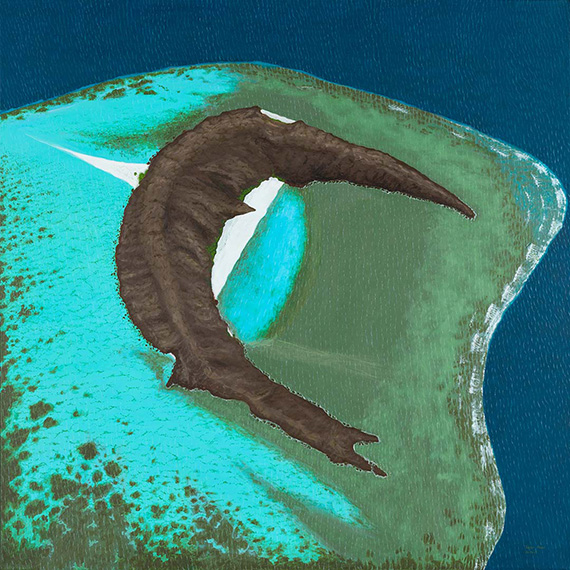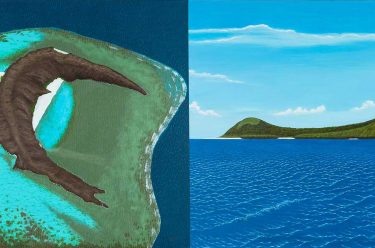
In April of 2015, the Queensland Art Gallery Board of Trustees formally endorsed the Gallery’s new Aboriginal and Torres Strait Island (ATSI) Engagement Strategy, which provides practical and ethical guidelines and procedures relating to our commitment to Indigenous Australian art and culture.
QAGOMA is committed to representing Indigenous Australian art and culture through collection development, exhibition programming, identified employment and professional development, community liaison, engagement and participation. Indigenous engagement strategies and Reconciliation Action Plans (RAP) are now major policy and procedural tools in structuring and improving organisational commitments throughout the private and public sector, and having a specifically designed Strategy and RAP enables organisations like the Gallery to turn good intentions into positive actions.
The development and implementation of our ATSI Engagement Strategy has been largely informed by Reconciliation Australia — an independent, not-for-profit organisation promoting reconciliation by building relationships, respect and trust between the wider Australian community and Aboriginal and Torres Strait Islander peoples — and is designed to align with the key principles of the Gallery’s broader Strategic Plan for 2014–19, namely: access for all; recognition of Aboriginal and Torres Strait Islander peoples; leadership through research, learning and innovation; and commitment to a sustainable, collaborative and inclusive culture. The Strategy acknowledges the distinct tribal systems, cultural protocols and ceremonial traditions maintained by Indigenous communities throughout Queensland and Australia. It guides Gallery staff in their understanding of and approach to our representation of engagement with Indigenous art, artists and communities. A major intended outcome of the ATSI Engagement Strategy is the development and formal endorsement of a QAGOMA Reconciliation Action Plan (RAP), which will be embedded in and reviewed under the terms of the Gallery’s annual Operational Plans.
In managing and implementing Indigenous engagement, several strategies are set out in the Gallery’s policy objectives: Acknowledgement of Country is particularly important to the Gallery and occurs as a matter of course at all public events: the Engagement Strategy commits us to community consultation to determine the most effective and meaningful form of acknowledgment. We continue to seek meaningful engagement with senior members of the local ATSI community, while national focal points such as NAIDOC week and Sorry Day enrich the scope of our programming and activities. To navigate Aboriginal and Torres Strait Islander community protocols, we are in the process of forming of an Advisory Group, to provide a strong, diverse forum through which we can address potential political, ethical and protocol issues. Regarding employment, training and professional development opportunities, we intend to share information on our Indigenous programs in part by engaging in regular conversations with Indigenous artists, and through them, reach a broader audience in local and national art and cultural communities. Sponsorship and business partnerships, along with intellectual property, are also key objectives.
As a first step, in January 2015, QAGOMA Director Chris Saines approved the formation of a special Indigenous Advisory Group comprising internal staff and key external Indigenous leaders and colleagues to focus specifically on the artists and works proposed for inclusion in ‘The 8th Asia Pacific Triennial of Contemporary Art’ (APT8). The APT8 Indigenous Advisory Group provided feedback, perspectives and guidance to the Gallery’s Executive Management team and curatorial staff regarding projects proposed for APT8 that have Indigenous content or that could, in the group’s view, benefit from guidance relating to communication and cultural protocols.
The main responsibilities of the Advisory Group have been to provide advice on how the Gallery may identify, reflect and protect Indigenous representation, rights and protocols in APT8 and ensure that artistic content and its interpretation is managed in a culturally sensitive way; to advocate on behalf of the Gallery within indigenous communities to assist us in resolving issues; and to help us liaise with local, state and national Indigenous people, communities and organisations.
The ATSI Engagement Strategy is intended to ensure that protocols for working with communities and individual Indigenous artists are incorporated into Collection, acquisition and exhibition documents, so that the Executive Management team, curatorial and exhibitions management staff are able to better identify and resolve culturally specific issues.
The Gallery is demonstrably committed to scheduling and supporting Indigenous art exhibitions and will maintain its program of commissioning, acquiring and representing Indigenous art, sourced both locally and Australia-wide. The October 2014 launch of a permanent space for Aboriginal and Torres Strait Island art in the Queensland Art Gallery has given us a prominent platform on which to develop and enact our engagement with artists and the community, and we will endeavour to develop increasingly innovative and sophisticated interpretive frameworks to extend our audiences’ interactions with Indigenous Australian cultures.
Jason Smith, former Curatorial Manager, Australian Art, QAGOMA
Subscribe to YouTube to go behind-the-scenes / Hear artists tell their stories / Read more about your Australian Collection / Know Brisbane through its Collection
#QAGOMA

